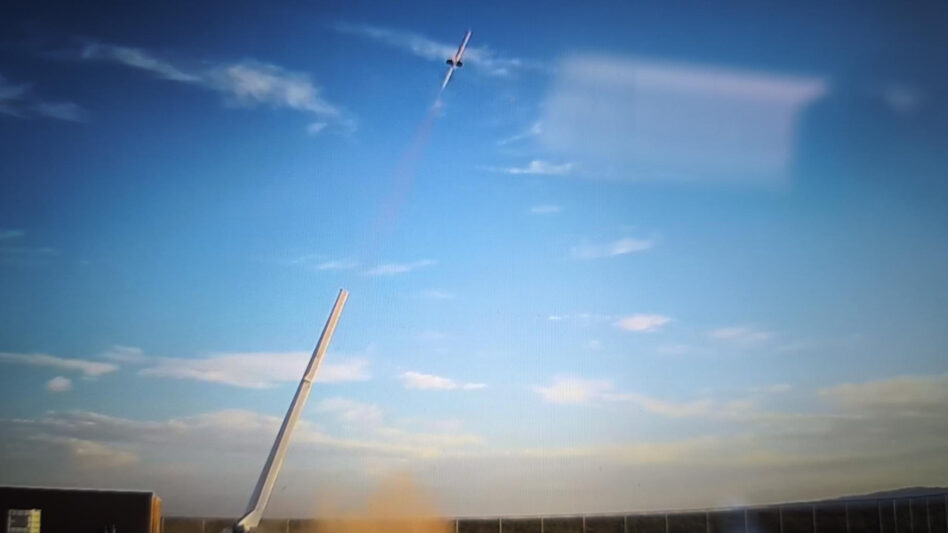Blast off. Yesterday morning, Venus Aerospace completed a successful flight test of its rotating detonation rocket engine (RDRE) deep in the New Mexico desert. According to the company, this is the first-ever successful high-thrust RDRE flight test in the United States.
“In four years, we’ve taken [the RDRE] from an academic concept to a fully working, high-thrust, compact engine that has applications for defense, especially… for affordable hypersonic systems and hypersonic weapons,” Venus CEO Sassie Duggleby told Tectonic.
Around and around: Venus’ ultimate goal since it was founded in 2020 has been to unlock “one-hour global travel.” Famously, the company said its Mach-9 Stargazer spaceplane (announced in 2022) would “take off from LAX and land in Tokyo in an hour, and then make the return flight to get you home for dinner.”
Central to this will be an engine Venus calls the VDR2, which the company says will reach speeds up to Mach 6. And central to that engine is the RDRE core.
Here’s how a rotating detonation engine works:
- RDREs are more efficient than your run-of-the-mill combustion engines, meaning they can produce more thrust with the same amount of fuel. They’re also more compact.
- By using a detonation (rather than deflagration) based process, they result in pressure-gain rather than pressure-loss combustion.
- At least in theory, that means that an RDRE engine can reach hypersonic speeds using less fuel and without, well, totally melting down. (High speeds mean super-high heat, remember.)
The VDR2 was successfully ignited at the end of last year, and the company plans to ground-test it later this year. According to co-founder and CTO Andrew Duggleby, its technology will enable hypersonic weapons that are 10X cheaper than the tech currently available.
In the pudding: This test, then, was kind of like a proof of concept for the core of the engine system—the RDRE. And it seems to have worked. According to Venus, during the test at New Mexico’s Spaceport America, the RDRE-powered rocket:
- Burned for 7 seconds
- Gained about 4400 ft in lift, reaching 9000 ft above sea level
- Traveled for about 30 seconds at 4 times the acceleration of gravity (4g)
- Was recovered mostly intact
Up to speed: Getting the RDRE—and by extension the VDR2—up to Mach 6 speeds eventually is mostly a matter of larger-volume tanks, Sassie Duggleby said. Much like a car, the speed and distance you can travel depend on how much fuel you can carry.
“We can take the same engine, put a larger vehicle around it, with larger tanks, and then we can go hit higher speeds and fly longer,” she said, “It’ll just keep pushing and going faster and faster and faster, as long as you have the right tank size.”

